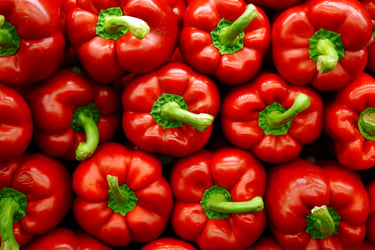eStoreRx™
Online Supplement Dispensary
eStoreRx™ is an easy direct-to-patient ordering & fulfilment program for lifelong wellness.
For over 40 years, Biotics Research Corporation has revolutionized the nutritional supplement industry by utilizing “The Best of Science and Nature”. Combining nature’s principles with scientific ingenuity, our products magnify the nutritional
eStoreRx™ is an easy direct-to-patient ordering & fulfilment program for lifelong wellness.
Biotics Research is proud to expand our commitment to education with the Wellness Unfiltered Pro Podcast. Each episode delves into key health topics and the clinical applications of our premier products. Through candid, insightful conversations, our team offers practical guidance to keep you informed and empowered as a healthcare professional.
January 06 2026
As reviewed in a recent Biotics Research Forum, an abstract recently presented at the American Heart Association’s Scientific Sessions suggests that p...
 Certain foods, when consumed in season, offer flavor and intensity that are missing when they’re eaten at other times of year. Tomatoes spring immediately to mind – a tomato in July is a completely different food compared to one in January. But another welcome bright red fruit at farmers’ markets and supermarkets in summer is red bell pepper. A recent article looked at the benefits of the underappreciated radish. Today, let’s turn the focus to red bell peppers.
Certain foods, when consumed in season, offer flavor and intensity that are missing when they’re eaten at other times of year. Tomatoes spring immediately to mind – a tomato in July is a completely different food compared to one in January. But another welcome bright red fruit at farmers’ markets and supermarkets in summer is red bell pepper. A recent article looked at the benefits of the underappreciated radish. Today, let’s turn the focus to red bell peppers.
As was true for radishes, bell peppers of all colors fit well into a range of different dietary approaches, from vegan and vegetarian to low-fat to keto. Although red peppers are sweeter than green ones and higher in carbohydrate than leafy greens and other non-starchy vegetables, overall, they’re still a very low carbohydrate food that keto dieters don’t need to completely avoid.
Red peppers bring more to a meal than just being delicious. They’re an excellent source of vitamin C, vitamin B6, folate, and beta-carotene, a vitamin A precursor. And since vitamin C is sensitive to heat, getting some from raw peppers—such as on a crudité platter or stuffed with cream cheese, goat cheese, or dipped into hummus—is a good way to go. A light sauté, such as when they’re prepared for fajitas, would also preserve most of their vitamin C content. (With orange juice off the menu for low-carb dieters, red peppers can be a good choice for getting vitamin C, as can tomatoes and broccoli. Red bell peppers actually contain more vitamin C than oranges!)
Shifting to phytochemicals with potential health benefits, here, too, red peppers are champions. They contain quercetin and lycopene, the latter of which is known to support prostate health and possibly improve sperm quality. (It also contributes to the red pigment of these peppers – as well as that of watermelon, tomatoes, guava, and other red/pink vegetables and fruits.) Green, yellow, and orange peppers contain lycopene as well, but red varieties provide much more. All colors of bell peppers are also high in total carotenoids, but red peppers have the most. Another phytochemical responsible for the bright red color is capsanthin, which is a potent antioxidant and may be especially beneficial for protecting skin against UVB damage. Capsanthin is being studied for potential use as a photoprotective in cosmetics and nutraceuticals but it may be degraded by light, heat, oxygen, and moisture, making it difficult to incorporate into these products. (So perhaps the best way to get it is to just eat red peppers!)
As is true for other brightly colored vegetables and fruits, bell peppers are rich in antioxidants. All peppers have potential health benefits, but red and yellow peppers have higher polyphenol contents and free radical scavenging capacity compared to green ones. (Red, yellow, and orange peppers, however, are simply green peppers that have ripened or matured.) Apart from their antioxidant content, red peppers (as well as other color varieties) may also provide modest effects on inhibiting acetylcholinesterase, with potential implications for Alzheimer’s disease.
Red peppers can be enjoyed raw or cooked and are highly versatile in both vegetarian and omnivorous diets. Roasted red peppers stuffed with kale and rice make a wonderful vegetarian Mediterranean dinner. For an extra boost of quercetin and vitamin C, roasted peppers and onions are a great side dish for a summer meal outdoors, and the smell of sausages and peppers cooking is a surefire way to entice people to come to the table. And no one needs to feel guilty for drizzling red peppers generously with olive oil or stuffing them with soft cheese. Their beneficial carotenoids are fat-soluble and thus may be better absorbed when consumed with some fat.
Submit this form and you'll receive our latest news and updates.
*These statements have not been evaluated by the Food and Drug Administration. This product has not intended to diagnose, treat, cure, or prevent any disease.
Proposition 65 Warning
© 2025 Biotics Research Corporation - All Rights Reserved
Submit your comment